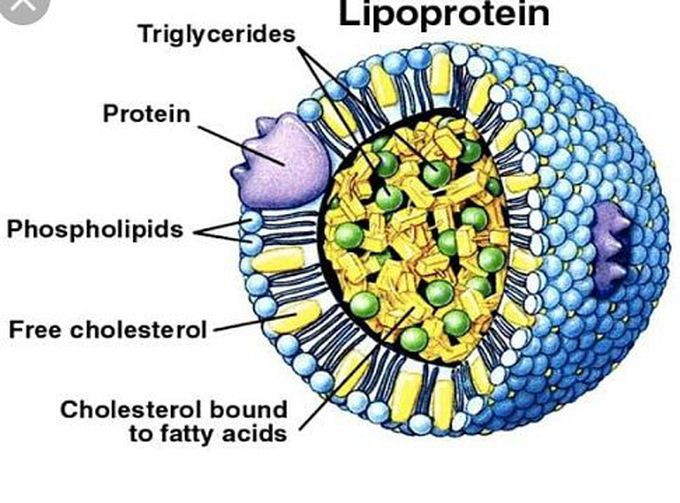

Naci Tolucanabout 7 years ago

The lipoprotein is a special particle of oil droplets surrounded by a single layer of phospholipid molecule. Phospholipids are fat molecules that are bound to a phosphorus-containing group. They are different in terms of being amphipathic, ie they have both polar and non-polar ends. In a lipoprotein, the polar ends of all the phospholipid molecules look outward, interacting with a polar molecule itself. This allows the lipoprotein to be transported in the blood, rather than rising to the top, like cream in the milk. The non-polar oil collected in the center of the lipoprotein in the phospholipid layer is thus transported to the place where it must be stored or metabolized in the bloodstream, although it is insoluble in the blood. Thus, lipoproteins are trucks at the molecular level to transport the oils wherever necessary or stored. Types of Lipoproteins Different lipoproteins are differentiated from specific proteins bound to the phospholipid outer layer called apolipoprotein. This also helps to stabilize the fatty molecule and also in some cases binds to cell surface receptors to enable the cell to receive lipoprotein by receptor-mediated endocytosis. The types and functions of lipoproteins are as follows: Chylomicrons - these are the density of lipoproteins with the highest and highest triglyceride content. They consist of a protein component synthesized in the liver, which wraps around the diet-derived cholesterol and fats. It passes from intestinal lymphatics to large vessels and adheres to the inner surface of small capillary blood vessels in the muscles and to fat storage cells in various parts of the body. Fat is digested while remaining cholesterol. This is now called chylomicron residue. He goes to the liver where cholesterol is metabolized. Thus, chylomicrons deliver fat and cholesterol from the intestines to the muscles, fat cells and liver. B-100 is associated with 5 different apoproteins, CI, C-II, C-III and E. With the exclusion of apoproteins, they are converted to idL and LDL, except those referred to as Apoprotein B100. cholesterol. They are second only to chylomicrons in the content of triglycerides.ID - medium density lipoprotein, created by the metabolism of VLDL. The only apoprotein associated with this is apoB-100. Thus, all of these forms carry the lipids and cholesterol produced in the liver into tissues. HDL is a high-density lipoprotein - this has the highest protein: lipid ratio and is therefore the busiest. It has apoprotein A-1. This is also called iyel good cholesterol aci because it transports cholesterol from tissues to the liver and lowers blood cholesterol levels. High levels of HDL are associated with a low risk of cardiovascular disease. HDL levels are higher with exercise, higher estrogen levels, alcohol consumption and weight loss. The importance of lipoproteins Lipoproteins show variable patterns associated with the risk of having a fatal cardiovascular event. High LDL, VLDL and triglyceride levels are associated with increased risk of atherosclerosis and heart disease. High HDL is associated with lower cholesterol levels and a lower cardiovascular risk. Thus, a high apo-A-1 measurement is associated with a low risk of atherosclerosis. HDL levels fall with smoking and rise with regular exercise, alcohol use, estrogen levels and weight loss. Lipid Profile An important part of the health assessment is the lipid profile. This includes measuring total plasma cholesterol, LDL, VLDL and HDL levels, and triglyceride levels. These numbers are examined together with other risk factors in your history to determine whether treatment is necessary to lower your cholesterol levels. High cholesterol does not show any symptoms or symptoms, so a blood test is required to assess the risk of atherosclerosis. All children should have a 9-11 age lipid profile and should be repeated between 17-21 years. Adults without other risk factors should take a blood lipid profile once in at least 5 years. A diet high in saturated fat is associated with a high cholesterol level. However, if omega-3 contains abundant fish oil, which is rich in unsaturated fats, cholesterol and triglyceride levels are significantly reduced. Monounsaturated and polyunsaturated fatty acids also reduce blood cholesterol, such as olive oil and peanut or sunflower oil, respectively.
Other commentsSign in to post comments. You don't have an account? Sign up now!

